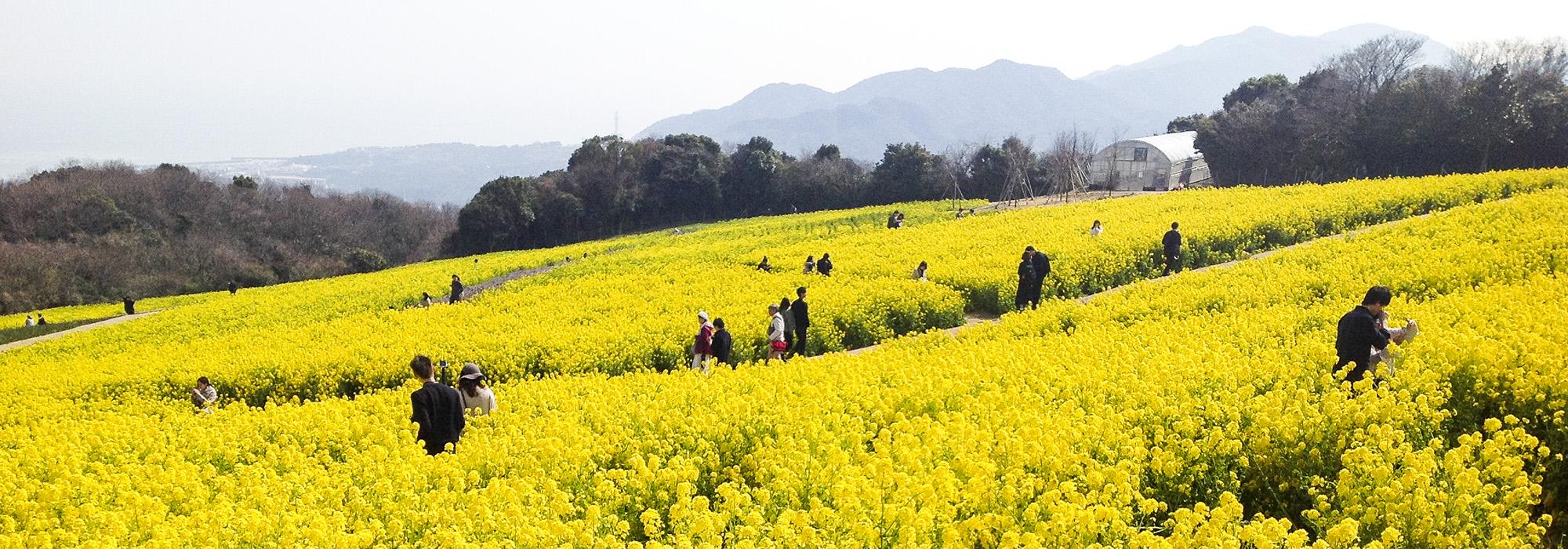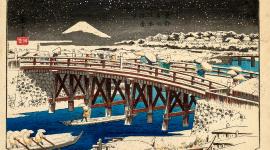Japan in All its Glory
Precocious first clusters of cherry blossoms were beginning to open during The Cultural Landscape Foundation’s inaugural overseas trip to one of the greatest collections of cultural landscapes on earth – Japan. The tour wove through temples, shrines, museums and restaurants in Tokyo (where one in ten Japanese people live), to an idiosyncratic site-specific art installation on the island of Inujima (population: 48), located in the Seto Inland Sea, along with stops in the historic capitals of Kyoto and Nara, as well as Matsue, Izumo, Naoshima and others. For two weeks, a group of TCLF Board and Stewardship Council members, landscape architects, and other enthusiasts from the U.S. and Australia channeled the spirit of James van Sweden, the influential landscape architect whose trips to Japan inspired this most recent excursion.
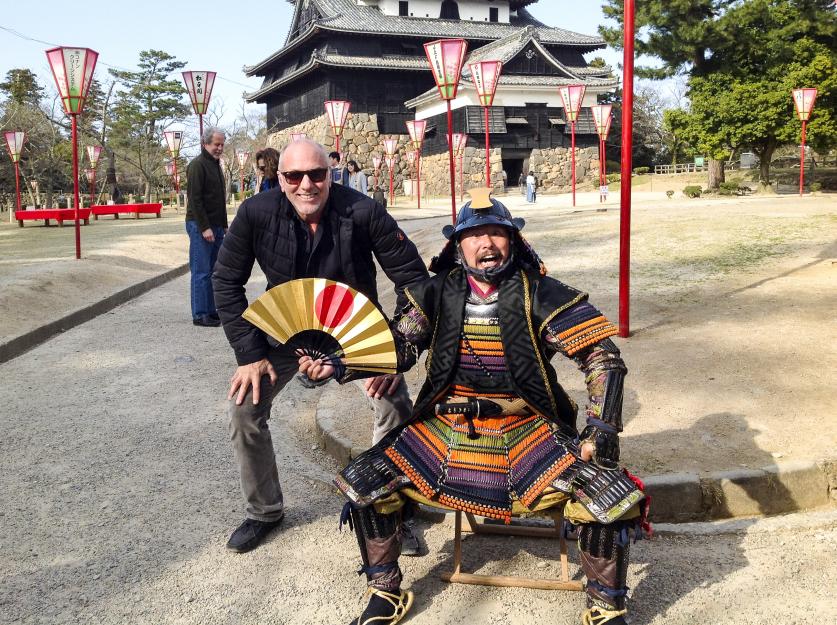
The trip was expertly organized and deftly curated by Susan Gullia of ProTravel International, who has been visiting Japan since the late 1970s, and led by the affable, unflappable, and very well informed guide, Izumi Tamura.
The adventure kicked off at the Cerulean Tower Tokyu Hotel, home base in Tokyo, where it’s 35th-floor breakfast room offered dramatic views of the city’s skyline and iconic Mount Fuji in the distance. Destinations included: Rikugien Garden, which means “six poems garden,” built circa 1700; the city’s most famous Shinto shrine located in a 200-acre park and dedicated to the late nineteenth century emperor who opened Japan to the West; and the vast East Gardens of the Imperial Palace, which is ringed by imposing stone-walled moats. Also on the dance card, the newly opened museum dedicated to the work of Katsushika Hokusai (known for the “Thirty-six views of Mount Fuji”); the Tokyo National Museum and the Nezu Museum, the latter the former home of the president of the Tobu railway company; and some group retail therapy at the Nuno Works fabrics warehouse.

Days later in the Shimane Prefecture, participants explored Izumo, home of one of the country’s oldest and most important shrines (dating to the early eighth century), and soba noodles. A short drive to Yasugi is the location of the Adachi Museum with astonishing viewing gardens; created in 1970 by a local businessman, it’s been ranked the number one garden in Japan for the past fourteen years. In nearby Matsue, we visited the impressive castle completed in 1611 (and one of twelve remaining nationwide), and the ascetic but elegant home of Lafcadio Hearn, an iterant nineteenth century journalist who penned “In a Japanese Garden” for The Atlantic in July 1892, among many articles.
Following a scenic drive through the mountains and a ferry ride, we arrived on the island of Naoshima, home to the Tadao Ando-designed Benesse House Complex, which includes a modern/contemporary art museum and hotel, both of which house impressive suites of Hiroshi Sugimoto photographs. Also on the island, the largely subterranean Chichu Art Museum, with permanent displays of works by Claude Monet, James Turrell and Walter De Maria; and a museum dedicated to the Korean-born artist Lee Ufan. On neighboring Teshima Island, a teardrop-shaped complex by artist Rei Naito and architect Ryue Nishizawa left visitors mesmerized. Two giant oculi admit natural light into the enormous, single-room, poured concrete structure, while drops of water emanate from the floor and skitter along the carefully graded surface like mercury in rivulets into shallow pools. The island hopping continued via a private yacht to Inujima, a vast, appealingly dilapidated brickwork complex that houses a series of art installations in a former copper-making facility.
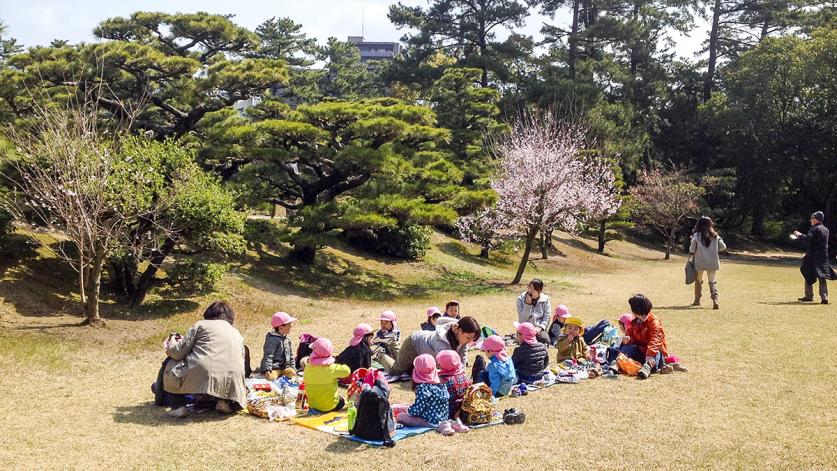
The tour then proceeded to Takamatsu, site of the spectacular Ritsurin Garden, which according to Fodor’s has nearly “1,000 sculpted pine trees, six carp-filled lakes, and two wooden teahouses where samurai used to gather to perform tea ceremonies and compose haiku”; if there’s a “central casting” for a quintessential Japanese garden, this is it. A late but very welcome addition to the schedule was the Isamu Noguchi Garden Museum, the former studio and grounds of the famed Japanese-American artist. From there, the group proceeded to Awaji Island, site of a subterranean Ando-designed shrine entered through a circular rooftop water lily garden, and Hanasajiki (Thousand Flower Garden), a hillside overlooking Osaka Bay covered in vast fields of chest high, bright yellow blossomed canola plants.
The journey continued on to its final stop in the ancient capital of Kyoto, which was the launching off point for several adventures starting with Nijo Castle, a UNESCO World Heritage site and residence of the Tokugawa shoguns who ruled the country for more than 260 years. Within the moated complex is the Nino Maru Garden, which is surrounded by its own moat, aptly designated by the Japanese Cultural Affairs Agency as a place of scenic beauty. Later in the day, the group explored Ryoan-ji Temple, another UNESCO World Heritage Site and the home of an internationally famous garden created around 1500 that features fifteen rocks set within a sea of meticulously raked white gravel.
The following day included an excursion to Shigaraki, site of a 247-acre mountainside complex with the Miho Museum and Gardens designed by I.M. Pei, and the home of an impressive collection of Asian and Western antiquities. From here the group visited the offices of Eriko Horiki, designer of washi, a durable, beautifully textured paper ubiquitous in Japan.
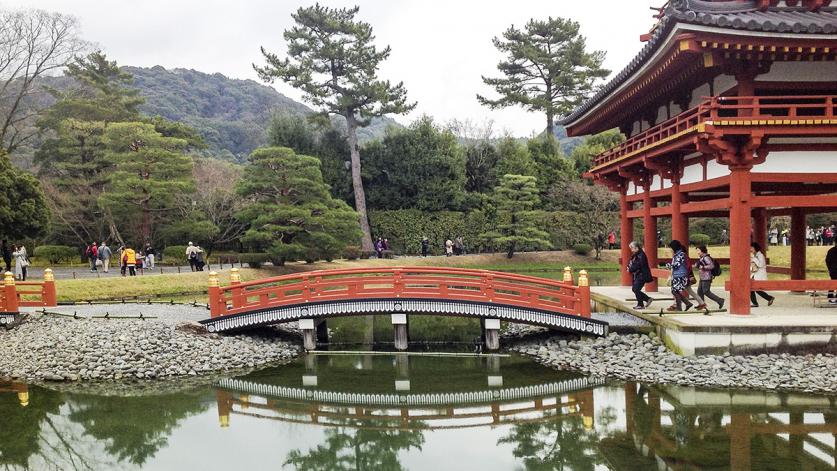
In adjacent Nara, established in 710 and another ancient capital (where today tame deer freely roam about), we visited Byodoin Temple, initially built in 998 as a countryside retreat villa. The centerpiece is the Phoenix Hall (from 1053), featured on the reverse side of the ten yen coin, which is surrounded by a moat and elegant strolling gardens. Smaller, more intimate neighboring gardens include Yoshiki-en, created in 1918, and Isui-en, with carpets of moss. From there, a visit to Todai-ji Temple, site of the world’s largest bronze statue of Buddha.
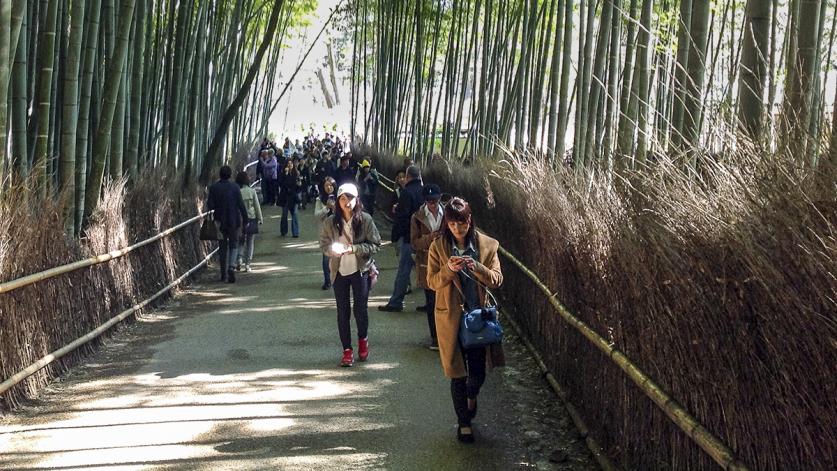
The final day began at the Sagano Bamboo Path, a walkway surrounded by towering stalks of green bamboo that carefully filter light and obscure the sounds of the city. The next stop was Tenryu-ji, one of Kyoto’s most important temples. Though established in 1339, it has suffered eight major fires and the present structures date to the Meiji era (1868-1912). The remarkable gardens, however, retain the same form as when they were designed in the fourteenth century. Nearby, the little known Hogonin Temple proved to be a big surprise. It contains the Shishiku Garden ("the garden of the lion’s roar"), believed to be at least 600 years old. According to an official brochure: “By strolling through the garden and by hearing the sound of birds singing and the wind blowing, it is said that it is possible to experience the truth of life and the true path, and experience a healing of the heart.” It should be on everyone’s itinerary.
The tour continued to Saiho-ji Temple and its extraordinary moss gardens. Entrance to this Zen Buddhist Temple complex, a UNESCO World Heritage Site, is strictly limited. A path rings a central water feature with small islands linked by moss-covered bridges; the grounds are completely covered with carefully tended undulating carpets of soft green mosses. This also should be on everyone’s itinerary.
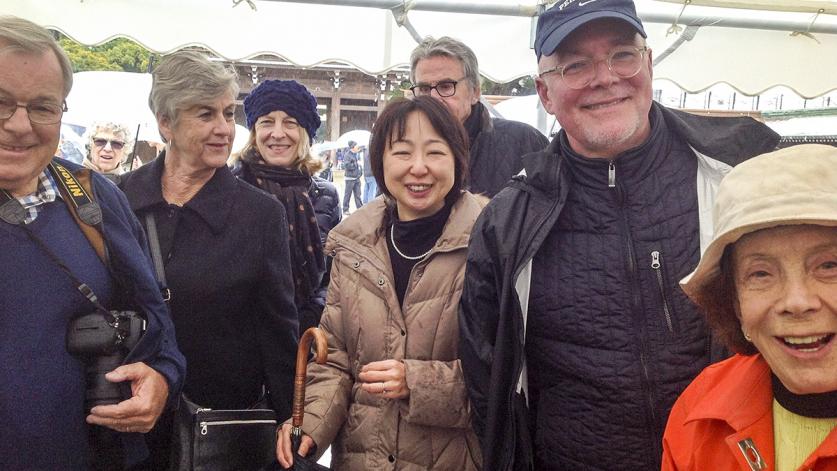
Most of the group went on to Zohiko to learn about traditional lacquer ware, while a small group went first to the Heian Jingu Shrine, created in 1890 on the 1,100th anniversary of Kyoto, which was thronged with students preparing for their return to school. We then proceeded to Ginkaku-ji, the Temple of the Silver Pavilion, first established in 1482, which includes a stunning dry white gravel and sand garden. One raked-gravel area is meant to suggest waves, while a flat-topped conical form represents Mount Fuji. The temple is at the northern end of the Philosopher’s Path, a two-kilometer-long stone-lined canal dotted with temples and hundreds of cherry trees. The day concluded with a farewell dinner at Hana Kitcho with a traditional dance performance by a Maiko, an apprentice Geiko (which is a Kyoto version of a Geisha).
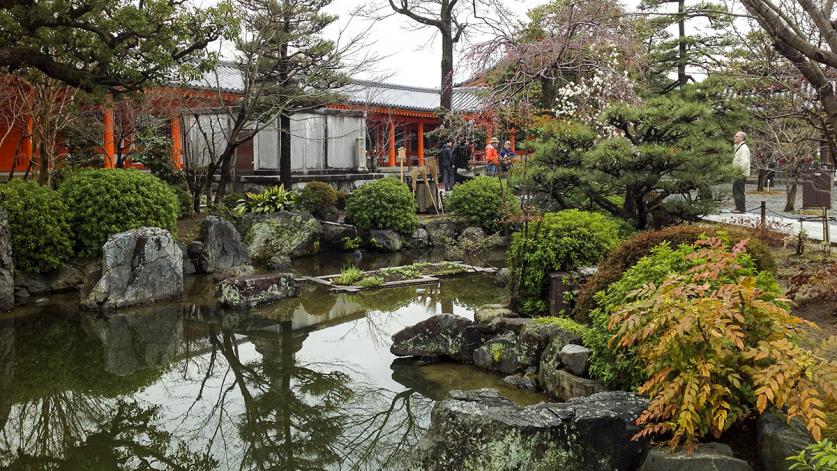
Before departing the Hyatt Regency Kyoto for flights back to the U.S. and Australia, a small group went next door to Sanjusangen-do, a temple that was re-constructed in 1266 surrounded by a garden of restrained elegance. Inside the 400-foot-long main building are 1,001 golden statues of Buddha – 1,000 life-sized standing statues and one giant seated figure. Of the 1,000 standing figures, 124 were made in the twelfth century when the temple was founded and the remaining 874 were created during the thirteenth century reconstruction. It’s the only surviving temple of its kind.
To say this adventure was inspiring, eye-opening and relentlessly beautiful would be an understatement.
Yes, we’re ready for a return visit.



